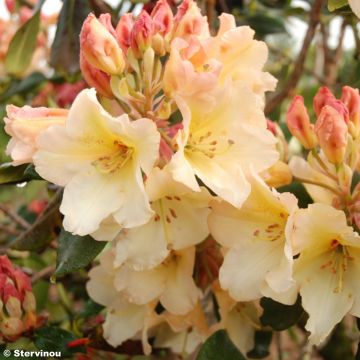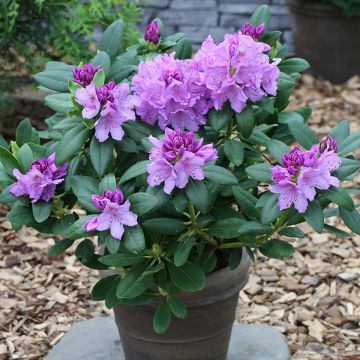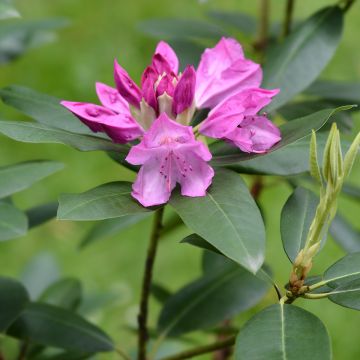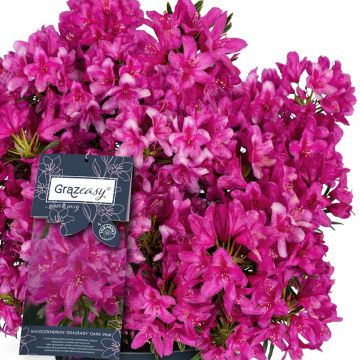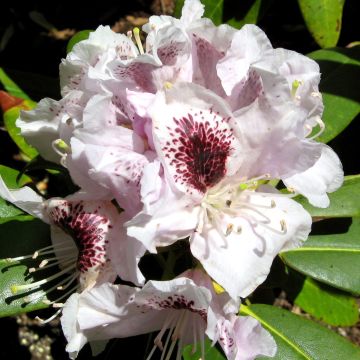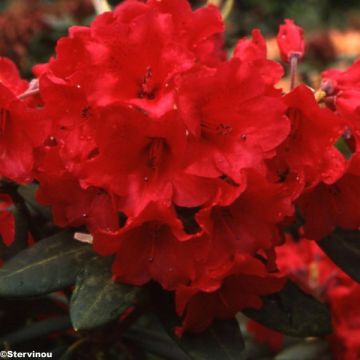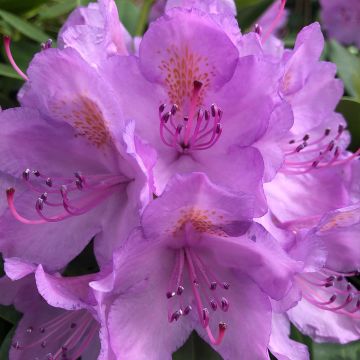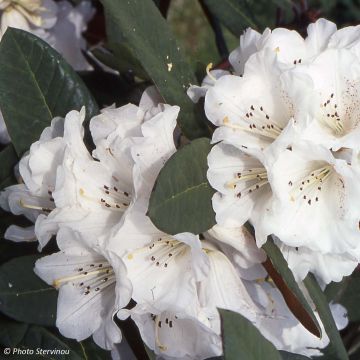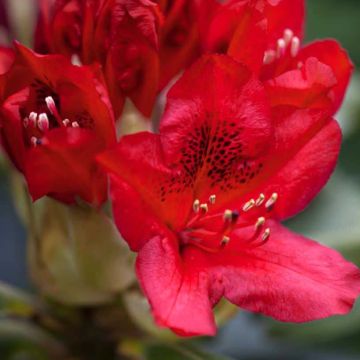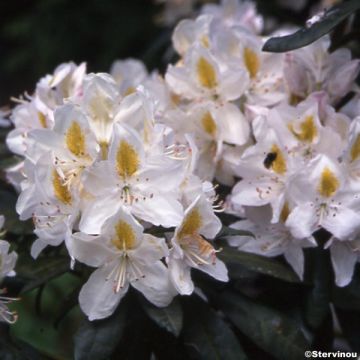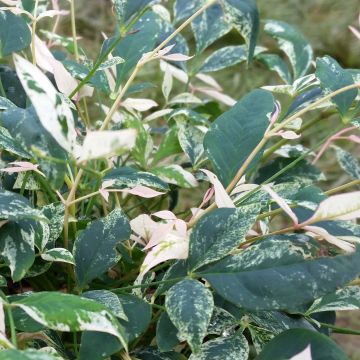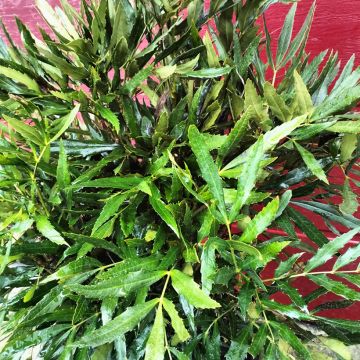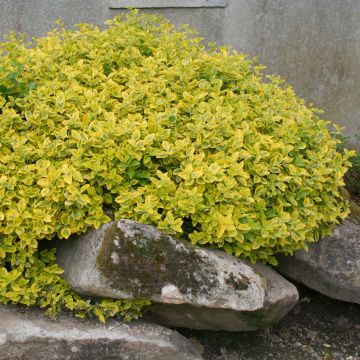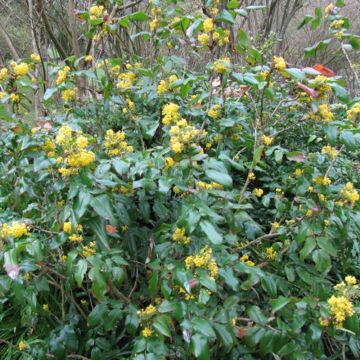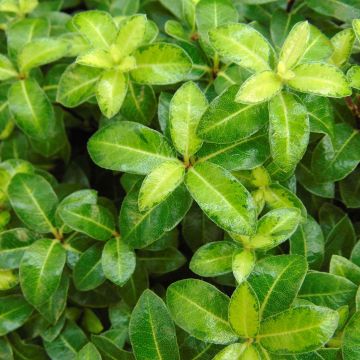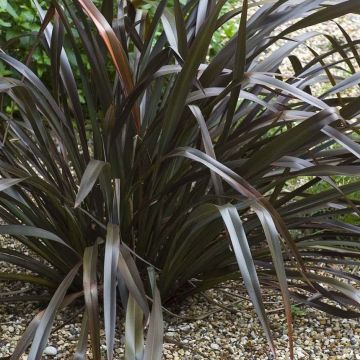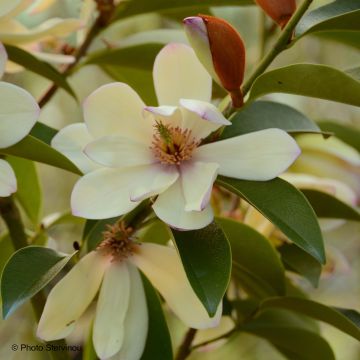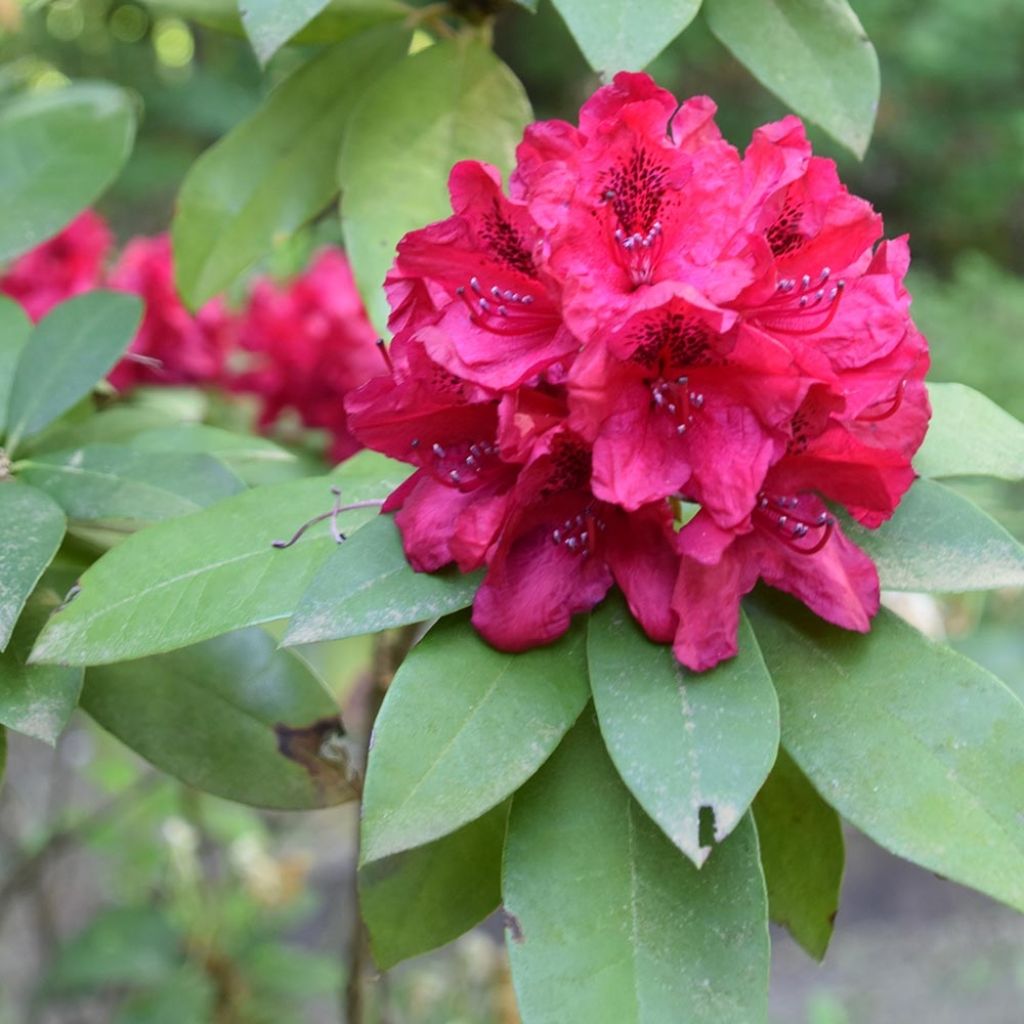

Rhododendron Mosers Maroon
Rhododendron Mosers Maroon
Rhododendron Moser's Maroon
Rhododendron
Wow!!! I'm chuffed; even lovelier than I hoped, a lighter shade, with a darker pink centre, it's my first rhododendron!!! Received in great shape, I'm delighted! So much so, I've ordered another different one so they can make a lovely pair!!!
Christine, 08/05/2020
Special offer!
Receive a €20 voucher for any order over €90 (excluding delivery costs, credit notes, and plastic-free options)!
1- Add your favorite plants to your cart.
2- Once you have reached €90, confirm your order (you can even choose the delivery date!).
3- As soon as your order is shipped, you will receive an email containing your voucher code, valid for 3 months (90 days).
Your voucher is unique and can only be used once, for any order with a minimum value of €20, excluding delivery costs.
Can be combined with other current offers, non-divisible and non-refundable.
Home or relay delivery (depending on size and destination)
Schedule delivery date,
and select date in basket
This plant carries a 24 months recovery warranty
More information
We guarantee the quality of our plants for a full growing cycle, and will replace at our expense any plant that fails to recover under normal climatic and planting conditions.

Would this plant suit my garden?
Set up your Plantfit profile →
Description
The Rhododendron 'Moser's Maroon' is an absolutely stunning old hybrid. With its large, glossy flowers of intense garnet-red, with a black blotch and a cluster of whitish stamens, it is perfect for bringing the garden to life in spring. This foliage of this variety is particularly distinctive due to the carmine-red colour of its spring shoots, which later turn a lustrous dark green. Its evergreen foliage, with its changing colours extends the season of interest for this beautiful shrub. With its dense, upright habit, it will look great in an ericaceous bed or a large container, in partial shade or even in full sun!
Rhododendrons are plants of the Ericaceae family, just like heathers, preferring predominantly chalk-free and slightly acidic soils, as well as damp climates. 'Moser's Maroon' was introduced in the early 20th century. In 1932, it received the prestigious RHS Award of Garden Merit for its ornamental qualities and performance in the garden. It naturally forms a dense bush with a distinctly upright habit, reaching about 2m (6.56 ft) in height and 1.50m (4.92 ft) in spread. It is fairly slow growing. Its dark green, evergreen leaves, which change colour, have a slightly satin finish and are elliptical in shape, covering the plant well. They have a very downy underside. The young leaves are a beautiful carmine-red to purple. In May-June, its remarkably abundant flowering overwhelms the bush: beautiful and large bell-like flowers bloom in voluminous corymbs. Their intense garnet-red colour, mottled with dark purple, is enhanced by the glossy texture of the petals and the white tips of the stamens, like little jewels clustered at the heart of the flower.
The Rhododendron 'Moser's Maroon' is a lustrous shrub, hardy down to -15°C (5 °F) or even -20°C (-4 °F) and easy to grow as long as the conditions suit it in terms of soil and climate. Although they prefer partial shade, large-flowered hybrid Rhododendrons can tolerate the sun as long as it is not too intense and their base remains cool and moist. 'Moser's Maroon', with its prolific, dazzling flowers, will dress up any small partially-shaded area of the garden, terrace, or balcony. Plant it together with ferns, blue or variegated hostas, Pieris, heathers, Kalmias, Azaleas, and Japanese Maples, or other rhododendrons from the same group to create superb patchworks of textures and colours in spring. Growing it in a container requires regular watering with non-alkaline water and specific fertilizer for ericaceous plants.
Report an error about the product description
Rhododendron Mosers Maroon in pictures
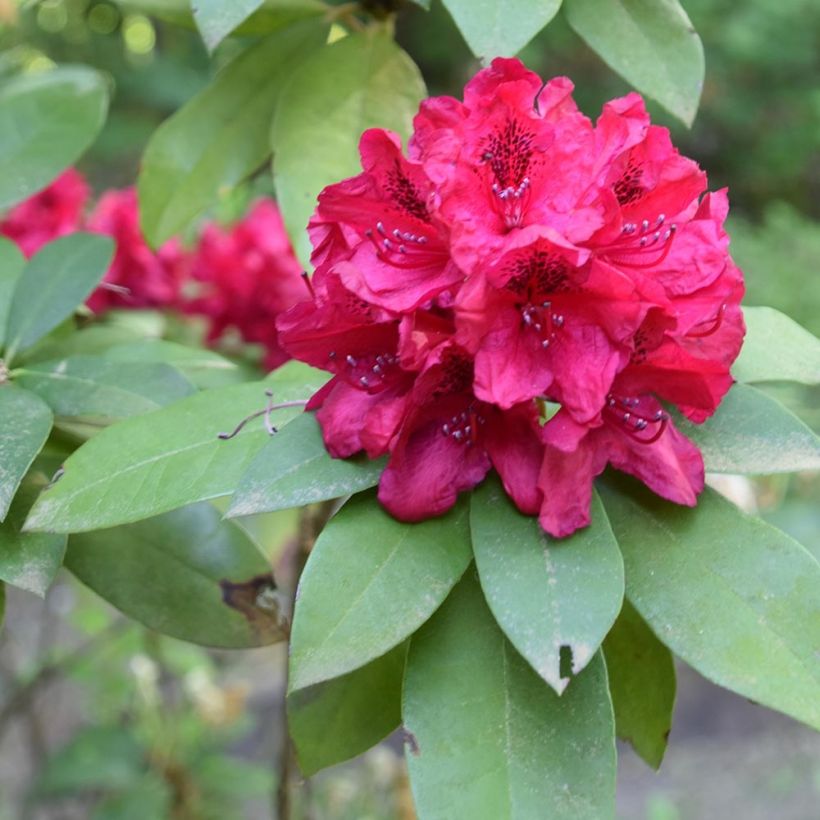

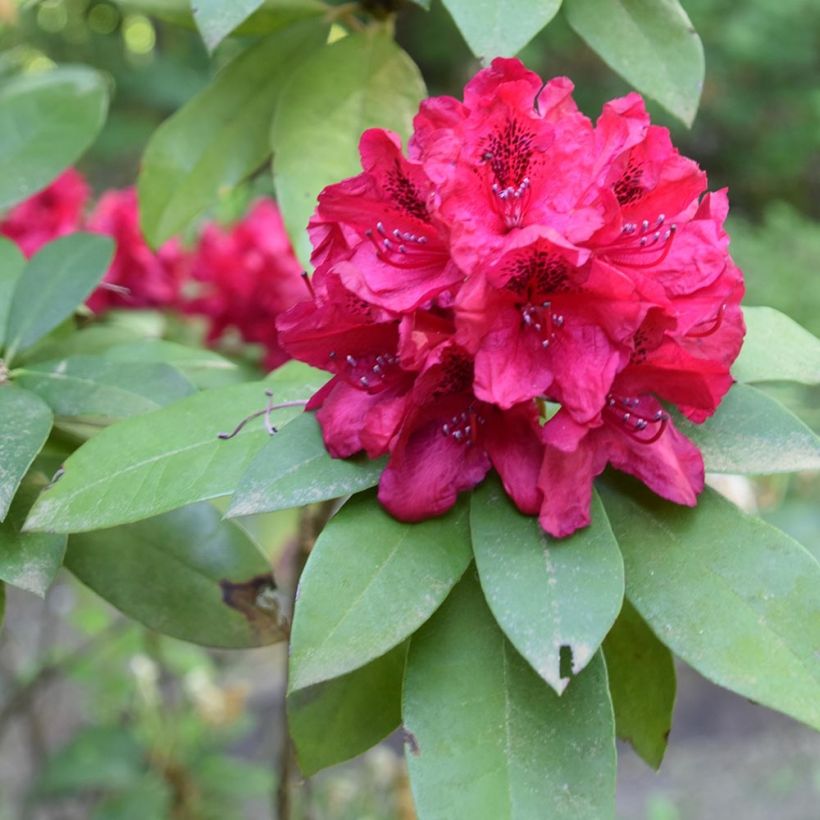

Plant habit
Flowering
Foliage
Botanical data
Rhododendron
Moser's Maroon
Ericaceae
Rhododendron
Cultivar or hybrid
Other Large Rhododendrons
View all →Planting and care
Plant the Rhododendron 'Moser's Maroon' in a semi-shaded position, protected from cold, drying winds, in a light, moist, acid to neutral, humus-rich soil. Like all ericaeous plants, it does not tolerate chalky or heavy soils waterlogged in winter. If the soil remains moist in summer, this Rhododendron will also tolerate some exposure to a moderate sun. Avoid planting at the foot of the Rhododendron, as its shallow roots do not respond well to competition from other plants, particularly for water.
Dig a hole three times larger than the pot. Soak the root ball in alkaline-free water and plant it so the base of the stem is at soil level, in a mixture composed of 1/4 peat, leaf mould, horticultural grit or perlite and loam. Water generously and keep the soil moist in summer. Azaleas and Rhododendrons have a shallow root system. As a result, they are sensitive to long periods of drought. That is why a soil enriched with humus and generous watering during dry periods is recommended. In addition, this root system is not very strong, which is why it is essential to lighten heavy soils with free-draining materials (horticultural grit, perlite, clay pellets) when planting. Apply a mulch of shredded pine bark around the base of the shrub every spring to keep the soil moist while maintaining an acidic pH.
Maintenance consists of removing faded flowers in summer and clearing out dead branches. Azaleas and rhododendrons can sometimes be attacked by weevils that eat the edges of the leaves and rootlets, as well as by the famous "Rhododendron lace bug", not usually causing significant damage. Yellowing of the leaves (chlorosis) in Rhododendrons indicates poor uptake of iron from the soil and causes premature plant death. While chalk is often the cause, poorly drained soil or a deeply planted root ball can also explain the phenomenon.
Planting period
Intended location
Care
-
, onOrder confirmed
Reply from on Promesse de fleurs
Similar products
Haven't found what you were looking for?
Hardiness is the lowest winter temperature a plant can endure without suffering serious damage or even dying. However, hardiness is affected by location (a sheltered area, such as a patio), protection (winter cover) and soil type (hardiness is improved by well-drained soil).

Photo Sharing Terms & Conditions
In order to encourage gardeners to interact and share their experiences, Promesse de fleurs offers various media enabling content to be uploaded onto its Site - in particular via the ‘Photo sharing’ module.
The User agrees to refrain from:
- Posting any content that is illegal, prejudicial, insulting, racist, inciteful to hatred, revisionist, contrary to public decency, that infringes on privacy or on the privacy rights of third parties, in particular the publicity rights of persons and goods, intellectual property rights, or the right to privacy.
- Submitting content on behalf of a third party;
- Impersonate the identity of a third party and/or publish any personal information about a third party;
In general, the User undertakes to refrain from any unethical behaviour.
All Content (in particular text, comments, files, images, photos, videos, creative works, etc.), which may be subject to property or intellectual property rights, image or other private rights, shall remain the property of the User, subject to the limited rights granted by the terms of the licence granted by Promesse de fleurs as stated below. Users are at liberty to publish or not to publish such Content on the Site, notably via the ‘Photo Sharing’ facility, and accept that this Content shall be made public and freely accessible, notably on the Internet.
Users further acknowledge, undertake to have ,and guarantee that they hold all necessary rights and permissions to publish such material on the Site, in particular with regard to the legislation in force pertaining to any privacy, property, intellectual property, image, or contractual rights, or rights of any other nature. By publishing such Content on the Site, Users acknowledge accepting full liability as publishers of the Content within the meaning of the law, and grant Promesse de fleurs, free of charge, an inclusive, worldwide licence for the said Content for the entire duration of its publication, including all reproduction, representation, up/downloading, displaying, performing, transmission, and storage rights.
Users also grant permission for their name to be linked to the Content and accept that this link may not always be made available.
By engaging in posting material, Users consent to their Content becoming automatically accessible on the Internet, in particular on other sites and/or blogs and/or web pages of the Promesse de fleurs site, including in particular social pages and the Promesse de fleurs catalogue.
Users may secure the removal of entrusted content free of charge by issuing a simple request via our contact form.
The flowering period indicated on our website applies to countries and regions located in USDA zone 8 (France, the United Kingdom, Ireland, the Netherlands, etc.)
It will vary according to where you live:
- In zones 9 to 10 (Italy, Spain, Greece, etc.), flowering will occur about 2 to 4 weeks earlier.
- In zones 6 to 7 (Germany, Poland, Slovenia, and lower mountainous regions), flowering will be delayed by 2 to 3 weeks.
- In zone 5 (Central Europe, Scandinavia), blooming will be delayed by 3 to 5 weeks.
In temperate climates, pruning of spring-flowering shrubs (forsythia, spireas, etc.) should be done just after flowering.
Pruning of summer-flowering shrubs (Indian Lilac, Perovskia, etc.) can be done in winter or spring.
In cold regions as well as with frost-sensitive plants, avoid pruning too early when severe frosts may still occur.
The planting period indicated on our website applies to countries and regions located in USDA zone 8 (France, United Kingdom, Ireland, Netherlands).
It will vary according to where you live:
- In Mediterranean zones (Marseille, Madrid, Milan, etc.), autumn and winter are the best planting periods.
- In continental zones (Strasbourg, Munich, Vienna, etc.), delay planting by 2 to 3 weeks in spring and bring it forward by 2 to 4 weeks in autumn.
- In mountainous regions (the Alps, Pyrenees, Carpathians, etc.), it is best to plant in late spring (May-June) or late summer (August-September).
The harvesting period indicated on our website applies to countries and regions in USDA zone 8 (France, England, Ireland, the Netherlands).
In colder areas (Scandinavia, Poland, Austria...) fruit and vegetable harvests are likely to be delayed by 3-4 weeks.
In warmer areas (Italy, Spain, Greece, etc.), harvesting will probably take place earlier, depending on weather conditions.
The sowing periods indicated on our website apply to countries and regions within USDA Zone 8 (France, UK, Ireland, Netherlands).
In colder areas (Scandinavia, Poland, Austria...), delay any outdoor sowing by 3-4 weeks, or sow under glass.
In warmer climes (Italy, Spain, Greece, etc.), bring outdoor sowing forward by a few weeks.






























